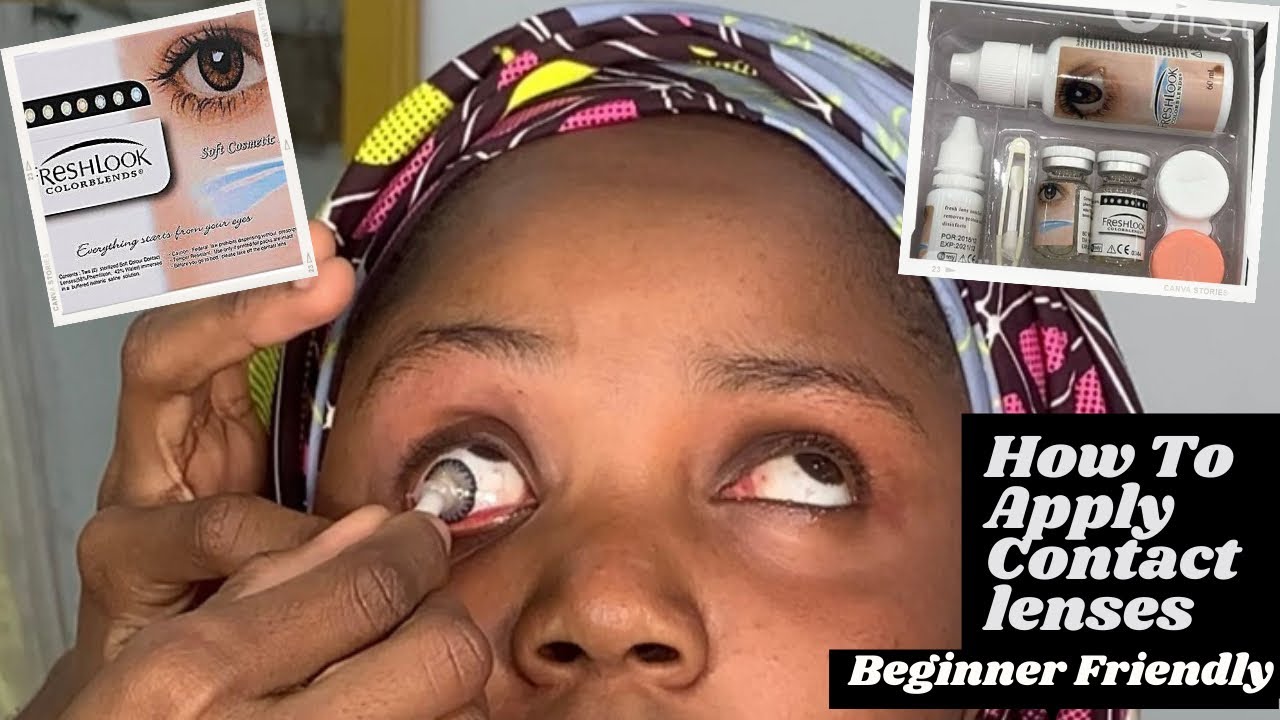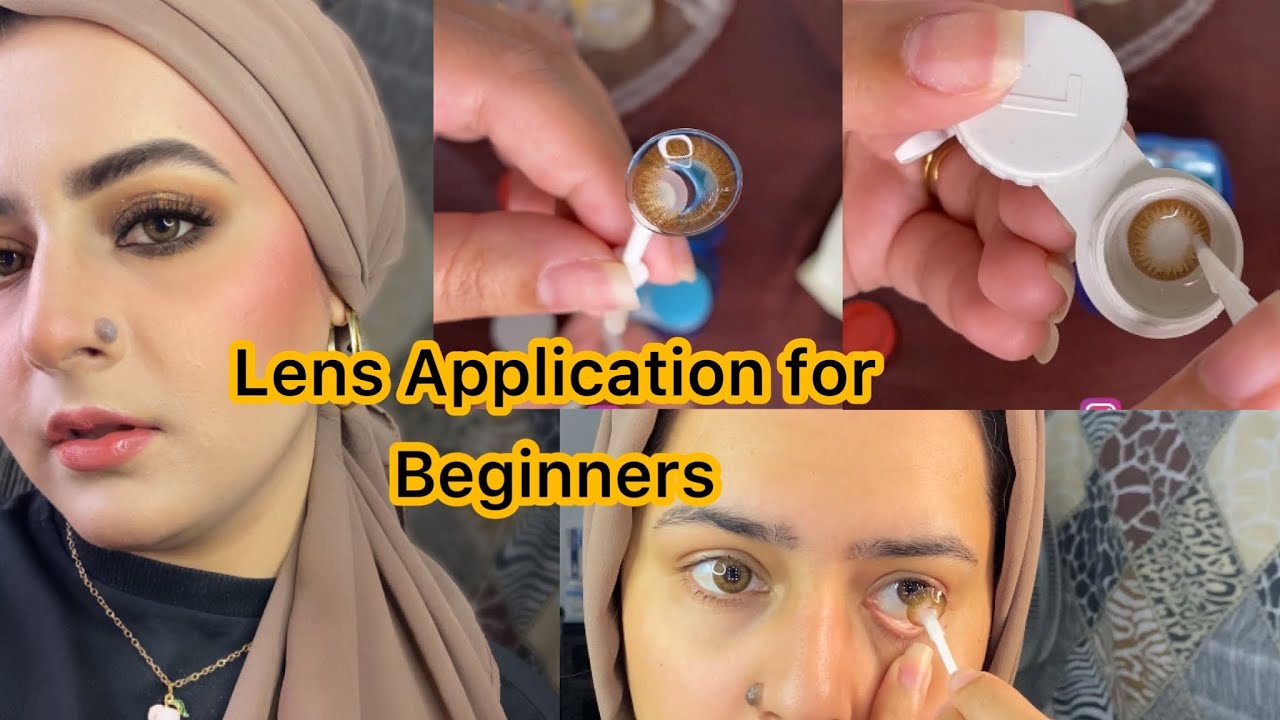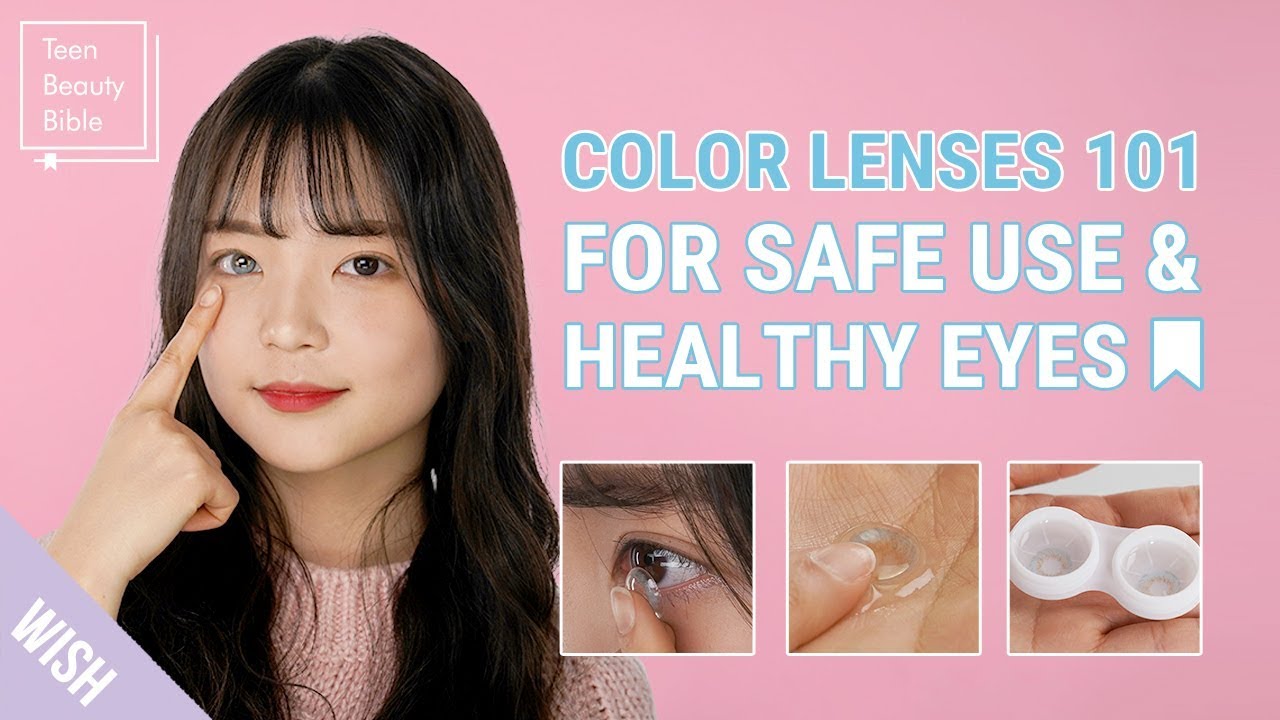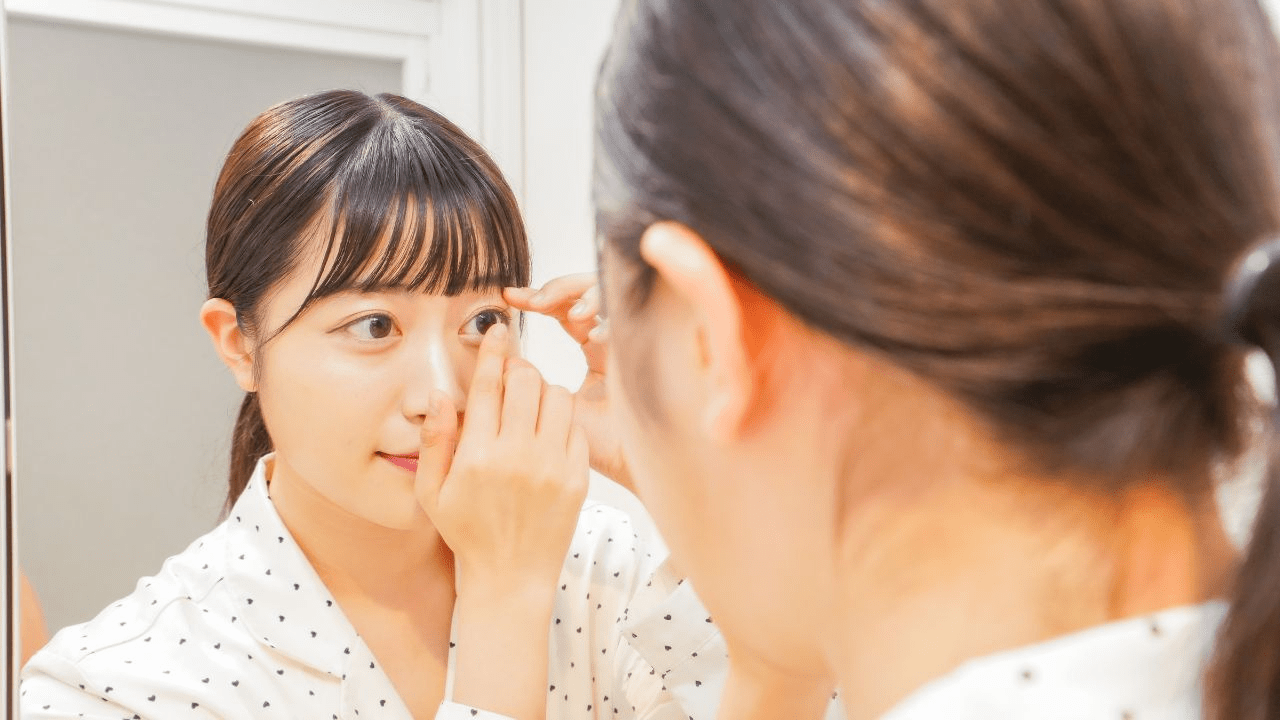Welcome to the world of contact lenses! If you’re considering making the switch from glasses to contacts, you’re in for a treat. They offer a seamless way to enjoy clear vision without the frames. However, as a beginner, it’s normal to feel a bit overwhelmed. Don’t worry! This guide will walk you through everything you need to know, making your first experience smooth and enjoyable. Let’s dive in!
Understanding Different Types of Contact Lenses

When it comes to contact lenses, one size definitely does not fit all. There are several types you can choose from, each designed to meet different needs and preferences. Understanding these types will help you find the right pair for your eyes.
1. Soft Contact Lenses
Soft lenses are the most popular choice among first-time users. They're made of soft, flexible plastics that allow oxygen to pass through to the eyes. Here are a few key points about them:
- Comfort: They conform to the shape of your eye, making them comfortable to wear.
- Variety: Available in various prescriptions, including those for astigmatism and presbyopia.
- Daily or Extended Wear: You can choose daily disposables or lenses that can be worn for longer periods.
2. Rigid Gas Permeable (RGP) Lenses
These lenses are more durable than soft lenses and can correct a wider range of vision problems. Here’s what you should know:
- Vision Quality: They provide sharper vision than soft lenses for many people.
- Adaptation Period: They might take some time to get used to, as they don't conform to the eye as easily.
- Longevity: With proper care, they can last for years, making them a cost-effective option.
3. Scleral Lenses
Scleral lenses are larger than standard contact lenses and can be a game-changer for those with irregular corneas or severe dry eye. Here’s why they might be the right option for you:
- Comfortable Fit: They vault over the cornea, providing a smooth surface for light to enter the eye.
- Moisture Retention: They hold a reservoir of saline, keeping your eyes hydrated throughout the day.
4. Toric Lenses
If you have astigmatism, toric lenses are specially designed to correct it. They come in both soft and RGP forms:
- Specific Design: The shape of toric lenses allows them to sit correctly on the eye and provide clear vision.
- Stability: They often have features that keep them in place, reducing the risk of blurriness.
5. Multifocal Lenses
For those experiencing presbyopia (difficulty focusing on close objects), multifocal lenses allow for clear vision at various distances:
- Segmented Vision: They have different zones for near, intermediate, and distance vision.
- Natural Transition: Many users find the transition between different zones seamless, improving their overall experience.
Choosing the right type of contact lens is crucial for your comfort and vision. Always consult with your eye care professional to find the best fit for your lifestyle and vision needs. Remember, there’s a perfect pair out there for you!
Also Read This: A Guide to Saving Dailymotion Videos Offline on PC and Mobile
3. Essential Supplies for First-Time Users

Before you dive in and start applying your contact lenses, it’s crucial to gather some essential supplies. Having the right tools on hand makes the process smoother and more comfortable. Here’s a quick checklist of what you’ll need:
- Contact Lenses: Of course, the most important item! Make sure you have the correct prescription, whether they’re daily, bi-weekly, or monthly lenses.
- Contact Lens Case: A clean, sturdy case to store your lenses when you’re not wearing them. This helps keep them safe and hygienic.
- Contact Lens Solution: Invest in a good multi-purpose solution. This will clean and store your lenses, ensuring they stay moist and free of debris.
- Tweezers or Lens Applicator: These can help you handle your lenses without using your fingers, minimizing the risk of contamination.
- Mirror: A well-lit mirror is essential for seeing what you’re doing. A magnifying mirror can be helpful if you’re struggling to see your eyes clearly.
- Hand Sanitizer: Clean hands are key! Always sanitize your hands before touching your lenses.
- Eye Drops: If you tend to have dry eyes, consider keeping some lubricating eye drops handy. They’ll keep your eyes comfortable throughout the day.
Having these supplies ready not only makes the experience easier but also ensures that you’re following good hygiene practices, which are vital for eye health. Never skip on the sanitization or storage solutions; your eyes will thank you!
Also Read This: Autoplay Dailymotion Videos in Iframes for Seamless Viewing
4. Step-by-Step Instructions for Applying Contact Lenses

Now that you have all your supplies ready, let’s walk through the process of applying your contact lenses step-by-step. Don’t worry; it might feel a bit awkward at first, but with a little practice, you’ll get the hang of it!
- Wash Your Hands: Start by washing your hands thoroughly with soap and water. Make sure to dry them with a lint-free towel.
- Prepare Your Workspace: Sit comfortably in front of a mirror with good lighting. Ensure you have all your supplies within reach.
- Open the Lens Case: Take out your first lens from its case. Always start with the same eye to avoid confusion.
- Inspect the Lens: Check the lens for any tears or debris. It should be in good condition and have a slight bowl shape. If it’s inside out, it will feel uncomfortable and won’t sit correctly on your eye.
- Rinse the Lens: Use your contact lens solution to rinse the lens. This removes any dust or particles.
- Apply the Lens: Place the lens on the tip of your index finger. Use your other hand to hold your upper eyelid open, and gently pull down your lower eyelid with your middle finger. Look up as you gently place the lens on your eye.
- Close Your Eye: After placing the lens, close your eye for a moment to let it settle. Blink gently, and you should feel the lens position itself.
- Repeat for the Other Eye: Now, repeat the process for your other eye. Always remember to keep track of which eye you started with!
And there you have it! With a little patience and practice, you’ll be applying your contact lenses like a pro. If you ever feel discomfort or notice irritation, remove the lenses and give your eyes a break. Remember, it’s all about comfort and safety.
Also Read This: How to Make Beautiful Birthday Cards at Home: Creative DIY on Dailymotion
5. Common Mistakes to Avoid When Applying Lenses

Putting in contact lenses for the first time can be a bit tricky, and it's easy to make mistakes that can lead to discomfort or even eye health issues. Here are some common pitfalls to watch out for:
- Forgetting to Wash Your Hands: Always wash your hands thoroughly before handling your lenses. It might seem simple, but dirty hands can introduce bacteria to your eyes, leading to infections.
- Using Expired Lenses: Check the expiration date on your lens packaging. Using expired lenses can cause irritation and compromise your eye health.
- Not Checking the Lens Orientation: Before inserting your lens, make sure it’s not inside out. A quick way to check is to place it on your fingertip—if it forms a bowl shape, you’re good to go.
- Applying Lenses When Dry: If your lenses feel dry or sticky, they won’t go in smoothly. Use the recommended saline solution to lubricate them before insertion.
- Neglecting to Follow the Schedule: Whether you’re using daily disposables or extended-wear lenses, stick to the recommended schedule for wearing and replacing them.
By avoiding these mistakes, you’ll make the process of applying contact lenses much smoother and more enjoyable. Remember, practice makes perfect, so be patient with yourself as you learn!
Also Read This: How Far Is Tattoo Far? Watch the Show on Dailymotion
6. Tips for Comfortable Wear Throughout the Day
Once you’ve successfully applied your contact lenses, the next step is ensuring they stay comfortable throughout the day. Here are some fantastic tips to help you enjoy clear vision without any discomfort:
- Stay Hydrated: Drinking plenty of water helps keep your body hydrated, including your eyes. Dehydration can lead to dryness, making your lenses feel uncomfortable.
- Use Rewetting Drops: If your eyes start to feel dry, don’t hesitate to use rewetting drops specially designed for contact lens wearers. They provide a quick relief boost!
- Avoid Rubbing Your Eyes: It’s tempting, especially if you feel a bit of irritation. However, rubbing your eyes can lead to scratches on your lenses or irritation of your eyes.
- Take Breaks: If you’re working on a computer or staring at your phone for long periods, remember the 20-20-20 rule: every 20 minutes, look at something 20 feet away for 20 seconds. This helps reduce eye strain.
- Consider Your Environment: If you’re in a dry or windy environment, try to protect your eyes with glasses. Also, avoid smoky or dusty areas, which can irritate your lenses.
Remember, comfort is key to enjoying your contact lenses. If you experience persistent discomfort or irritation, it’s always wise to consult your eye care professional. They can help ensure you’ve got the right fit and type of lenses for your needs!
Also Read This: How to Make Bubble Liquid: DIY Fun Tutorial on Dailymotion
7. Maintaining and Cleaning Your Contact Lenses
Congratulations on taking the plunge into the world of contact lenses! Now, let’s talk about an essential part of this journey: maintenance and cleaning. Proper care keeps your lenses safe and comfortable, ensuring you can enjoy all the benefits they offer.
Why Maintenance Matters: Whether you have daily or monthly lenses, maintaining cleanliness is crucial. Bacteria can accumulate on your lenses, leading to discomfort or even eye infections. So, how do you keep them clean?
- Wash Your Hands: Always start by washing your hands with soap and water before handling your lenses. This simple step helps prevent germs from transferring to your lenses.
- Use the Right Solution: Make sure to use a contact lens solution recommended by your eye care professional. Avoid using water or saliva, as they can introduce harmful microorganisms.
- Clean Your Lenses: After removing your lenses, place them in the palm of your hand, apply a few drops of the cleaning solution, and gently rub them with your fingers for about 20 seconds. Rinse thoroughly with more solution.
- Store Properly: Always store your lenses in a clean case filled with fresh solution. Replace the solution daily, and clean your lens case regularly to avoid contamination.
Additional Tips:
- Don’t wear your lenses longer than recommended. Overwear can lead to discomfort and complications.
- Keep track of the expiration date of your lens solution. Using expired products can be harmful.
- If your lenses feel uncomfortable or your eyes get red, remove them immediately and consult your eye care professional.
Remember, a little effort in maintaining your lenses goes a long way in ensuring your eyes remain healthy and comfortable. Happy lens wearing!
8. When to Consult an Eye Care Professional
While contact lenses can be a fantastic option for vision correction, there are times when it's crucial to seek guidance from an eye care professional. Here are some situations where you should definitely make that call:
- Persistent Discomfort: If your lenses feel uncomfortable or your eyes feel irritated, don’t ignore it. This could be a sign that your lenses aren’t fitting correctly or you may need a different type.
- Changes in Vision: Notice any sudden changes in your vision? It’s time for a check-up. Issues like blurriness or difficulty seeing could indicate a need for a prescription update.
- Red or Watery Eyes: Experiencing redness, excessive tearing, or discharge? These symptoms could signal an infection or allergy, which requires professional attention.
- Follow-Up Appointments: Don’t skip your scheduled follow-ups. Your eye care professional can monitor your eye health and ensure your lenses are functioning as they should.
What to Expect During Your Visit:
Your appointment will likely include a comprehensive eye exam, where the professional will check your eye health and the fit of your lenses. They might also perform additional tests to ensure everything is as it should be.
Being proactive about your eye health is key. Early intervention can prevent complications and ensure you enjoy the full benefits of your contact lenses. Remember, your eyes deserve the best care!
 admin
admin








